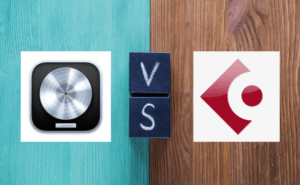

These specs are impressive for under $100, but how well does the software integrate these features? Let’s find out. This particular version boasts up to 48 audio tracks, each with 8 inserts to add your choice of the 47 built-in VST effects. Up first is Steinberg’s Cubase Elements 11. To save our wallets and yours, we will be comparing two entry-level versions of each product (Cubase Elements 11, and Pro Tools First respectively). It is worth pointing out that both of these DAWs are available in a variety of different price brackets. We will be comparing their user interface, and both recording and editing capabilities, in this head-to-head comparison. While product websites will provide you with a comprehensive list of technical specifications, we will be approaching these DAWs with daily use cases in mind. Between recording episodes, and then editing and producing them, you will be spending a large amount of your time in these applications, therefore it stands to reason that your time with them should be as simple and enjoyable as possible. Alongside carrying out these two basic tasks, an intuitive user interface is a massive bonus. Therefore, a successful DAW should be able to carry out these two primary functions as efficiently as possible. This workstation should be able to see you through the recording and tracking of audio, and any subsequent post-production with a high degree of flexibility. If this is a familiar scenario then fear not, because today we will be taking a deep dive into two of the most popular DAWs on the market – to see how they compare in 2021.īut what exactly is a DAW, and what does it stand for? A DAW (digital audio workstation) is software that is designed to record and edit music. This leads to a plethora of available software, and with such saturation, you may be left feeling confused as to which DAW best for you. However, this shift to consumer markets has generated a hugely profitable, and highly competitive market for digital recording software. However, developments in the digitization of recording technology, and the widespread availability of personal computers have made the practice readily available to hobbyists and casual consumers alike.

In the past, audio recording was a practice limited to only a select few lucky enough to have the money and technical knowledge to operate expensive desks, and tape machines. Please assume all links on this page are affiliate links. As an Amazon Associate we earn from qualifying purchases when you use one of our links. Affiliate Disclosure: The Seasoned Podcaster is supported by its readers.


 0 kommentar(er)
0 kommentar(er)
